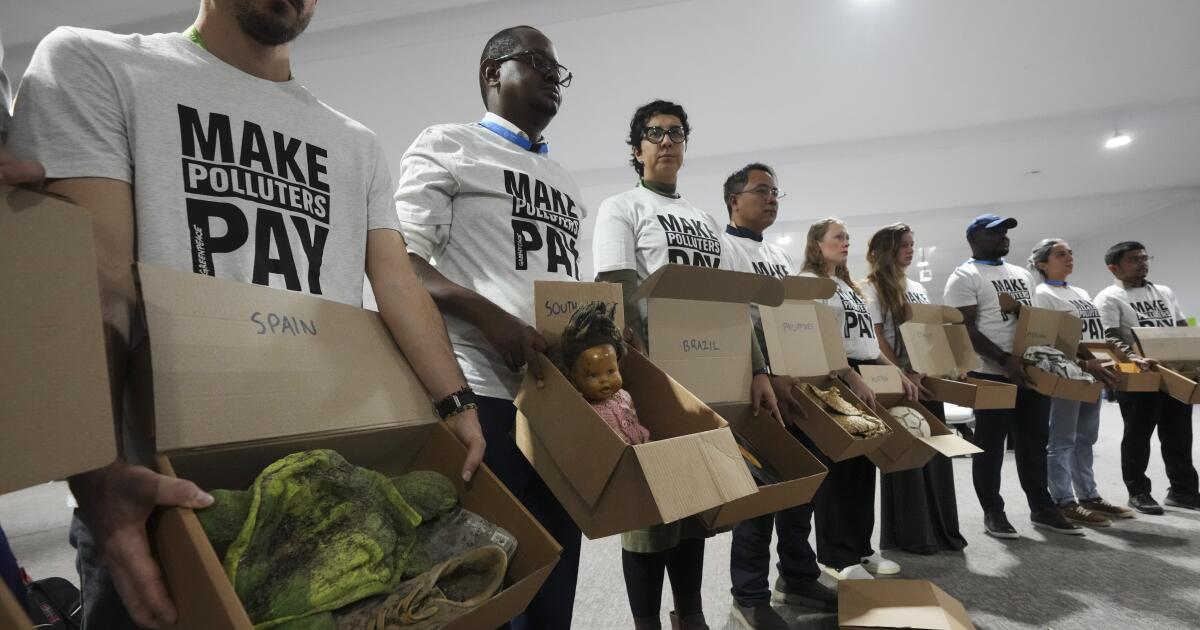42-16-42.
No, that’s not a new size for Barbie dolls from the 2023 blockbuster movie. It’s actually a promising statistic for women in Hollywood in 2024: for the first time in the history of Hollywood’s top-grossing films, female protagonists appeared as frequently as male protagonists in the year’s 100 biggest hits.
In total, 42 films starred female leads, another 16 featured both female and male co-leads, and 42 were headlined by male protagonists. The surprising standout of the year? A top-grossing animated film about a young girl navigating puberty through the lens of hockey playing. Who saw that coming?
If you were among the predominantly female audience of the 2023 “Barbie” movie, you might not be so surprised. That film soared to the number one spot on the charts as the only female-led entry in the top five for the year.
Things have changed in 2024. Female-centric films “Wicked” and “Moana 2” claimed the third and fourth spots in box office rankings, even with their late-November launches. Like “Inside Out 2,” they drew huge numbers thanks to women and girls flocking to theaters.
It’s perhaps time Hollywood reconsider the old notion that young men are the primary drivers of ticket sales.
For those arguing that 2024’s top films don’t feature “real” women because they’re about animated girls and witches, it’s worth noting that the top male characters this year included comic book heroes and a Minion. Audiences are clearly leaning toward fantasy.
“We’ve always known that films led by women could be box office successes,” asserts Stacy L. Smith, who founded USC’s Annenberg Inclusion Initiative. She co-authored one of two recent studies highlighting gender parity in leading roles this year. Smith notes that this change isn’t simply an economic realization; rather, it’s the result of various groups and initiatives pushing for on-screen equality, from advocacy organizations to studio diversity efforts.
On the product front, 2024 also saw the release of a “Women in Film” Barbie set, featuring roles like director, movie star, studio executive, and cinematographer. While these roles are aspirational, they aren’t yet the norm. Despite “Inside Out 2” being written and directed by women, only 11% of the directors and 16% of writers in the top 100 films last year were women, down 3% from 2023.
Yes, you’re reading that correctly: although a woman was behind 2023’s most successful movie, most of 2024’s leading women characters were directed by men. When it comes to awards season, out of the 10 best picture nominees, half feature female leads, but only one woman snagged a best-director nomination, and just four of the 21 nominated writers are women.
Does it matter who’s calling the shots if we’re seeing women’s stories on the screen? Absolutely.
Female characters in films continue to be typically younger than their male counterparts and are less often shown as leaders or professionals.
Martha M. Lauzen from the Center for the Study of Women in Television and Film notes in her 2024 study that female characters are often identified through their relationships with men, whereas male characters are identified by their professions. Women in films directed by women break away from stereotypes and have more autonomy. They speak up more and engage in interruptive dialogue, both considered “powerful language behaviors,” according to Lauzen. Her research also highlights that female-directed films employ far more women as editors, writers, and cinematographers than their male-directed counterparts.
Leading the charge in 2024’s shift toward female-focused films is Universal Pictures, under the leadership of Donna Langley. With two-thirds of its releases, including “Wicked,” spotlighting women and girls, Langley credits the studio’s progress to efforts like the Global Talent Development & Inclusion division, launched in 2017. Female-led films tend to create environments conducive to more women getting involved on set, says Langley.
The studies by Lauzen and Smith focus on the top-grossing films in theaters, a method each has used for decades. While changes might appear significant in such a small sample size of 100 films, it’s important to remember that streaming now alters the landscape of creative content significantly. Nevertheless, those big screen blockbusters still serve as a reliable indicator of hiring trends and role distribution in Hollywood.
Though the progress over the years has been unpredictable, 2024’s “measurements” — 42-16-42 — mark a significant achievement. True equality in Hollywood, both in front of and behind the camera, remains a work in progress but proves it isn’t beyond reach.
Meg Waite Clayton, who has penned nine novels about women throughout history, will release her latest book, “Typewriter Beach,” this summer. It dives into the world of screenwriters and actors.

















